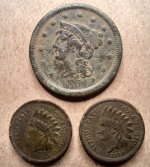FinderKeeper
Bronze Member
- Apr 7, 2007
- 1,175
- 1,477
- Detector(s) used
- Schonstedt sopt, GPL , 2 box, Dowsing Rods, Long Range Locators, Radar, Bounty Hunter & a lot more
- Primary Interest:
- All Treasure Hunting
- Thread starter
- #41
Ya I am aware of the laws on found treasure , if its the Templar Treasure I don't want it or own it , it belongs to everyone. How ever I do own the mineral rights to this site and any gem stones un cut, gold nuggets or gold dust, diamonds uncut, etc belong to me. I believe the Templars found enough gold in Gold River to cover the towers of the castle. If this story is true then they have a lot stored away. This gold again is not part of any treasure from another country.
I did post a map picture of the site on the first post, check it out . Many more pictures will be posted.
I did post a map picture of the site on the first post, check it out . Many more pictures will be posted.
FinderKeeper, may I just remind you that this is the Nova Scotia government you will be dealing with if you go the museum route. According to them, if anything of value is found on the land or under the water around here, they own it. Could you not hire a private archaeologist and skip the museums, or anything remotely connected with government, on this issue for now? Mind you the universities still have some semblance of autonomy here, so hopefully one of them can be of assistance. Good luck to you!




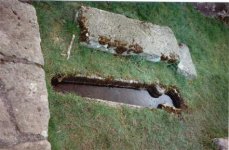
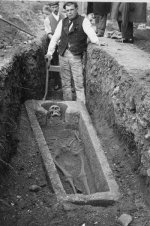
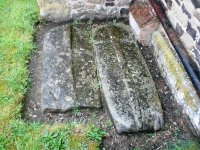
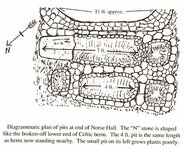
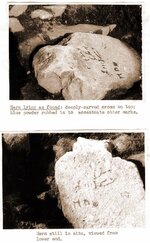
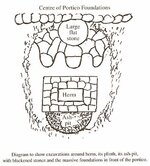
 Why carve it full length then stand it up and burry 1/2 of it. The Herm is a Templar Grave Plate, one of two found at the site. The two burial sites were located at the end of Norse Hall. The Herm was one of the Grave markers but was moved to another part of the yard to make another burial burn site . If you look at the Tree of Life and lay it out over the castle site and you can see both grave sites are on the cross . One to the right and one to the left. The Death Area is just below this. I have posted some Templar Graves from Europe to show you why the drawings Joan Made look 100% like Templar Grave Plates. These Graves were made fast , it looks like they had little time to do the same kind of carvings like in Europe so something must of happen for them to make them crude. I believe they all died from the Bubonic Pledge and if this is true then the 2 sites located on the arms of the cross are burn sites to burn the bodies and place them in the area of Death. Joan found ash and smaller bones at both grave sites. So I believe they had 2 grave stones side by side then moved one so they could burn more bodies faster. The Herm was found later and stood up, that's when the town got its name. Ya , I am sure a lot of people will not agree with this but it works for me. Check out my first post for updates.
Why carve it full length then stand it up and burry 1/2 of it. The Herm is a Templar Grave Plate, one of two found at the site. The two burial sites were located at the end of Norse Hall. The Herm was one of the Grave markers but was moved to another part of the yard to make another burial burn site . If you look at the Tree of Life and lay it out over the castle site and you can see both grave sites are on the cross . One to the right and one to the left. The Death Area is just below this. I have posted some Templar Graves from Europe to show you why the drawings Joan Made look 100% like Templar Grave Plates. These Graves were made fast , it looks like they had little time to do the same kind of carvings like in Europe so something must of happen for them to make them crude. I believe they all died from the Bubonic Pledge and if this is true then the 2 sites located on the arms of the cross are burn sites to burn the bodies and place them in the area of Death. Joan found ash and smaller bones at both grave sites. So I believe they had 2 grave stones side by side then moved one so they could burn more bodies faster. The Herm was found later and stood up, that's when the town got its name. Ya , I am sure a lot of people will not agree with this but it works for me. Check out my first post for updates.


